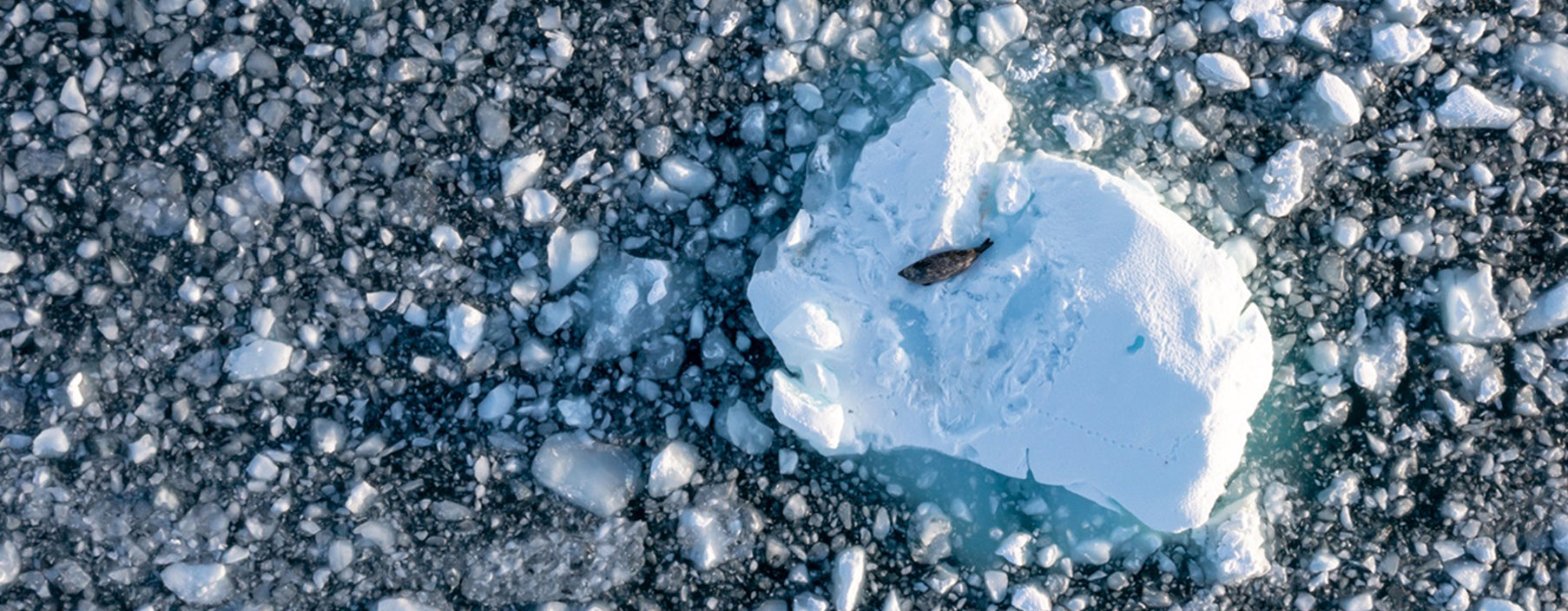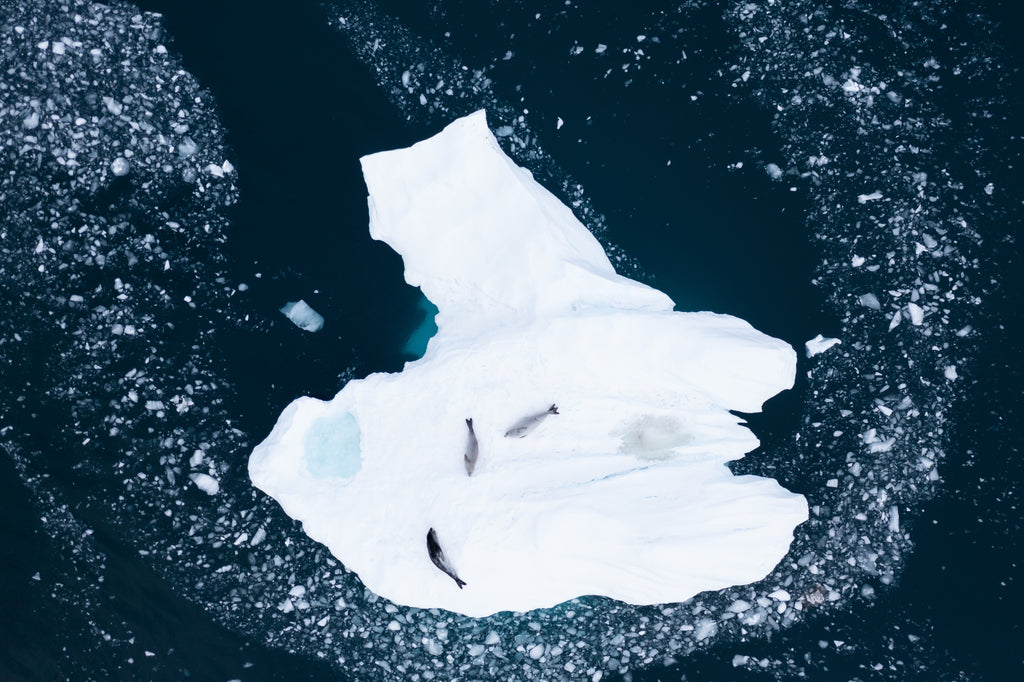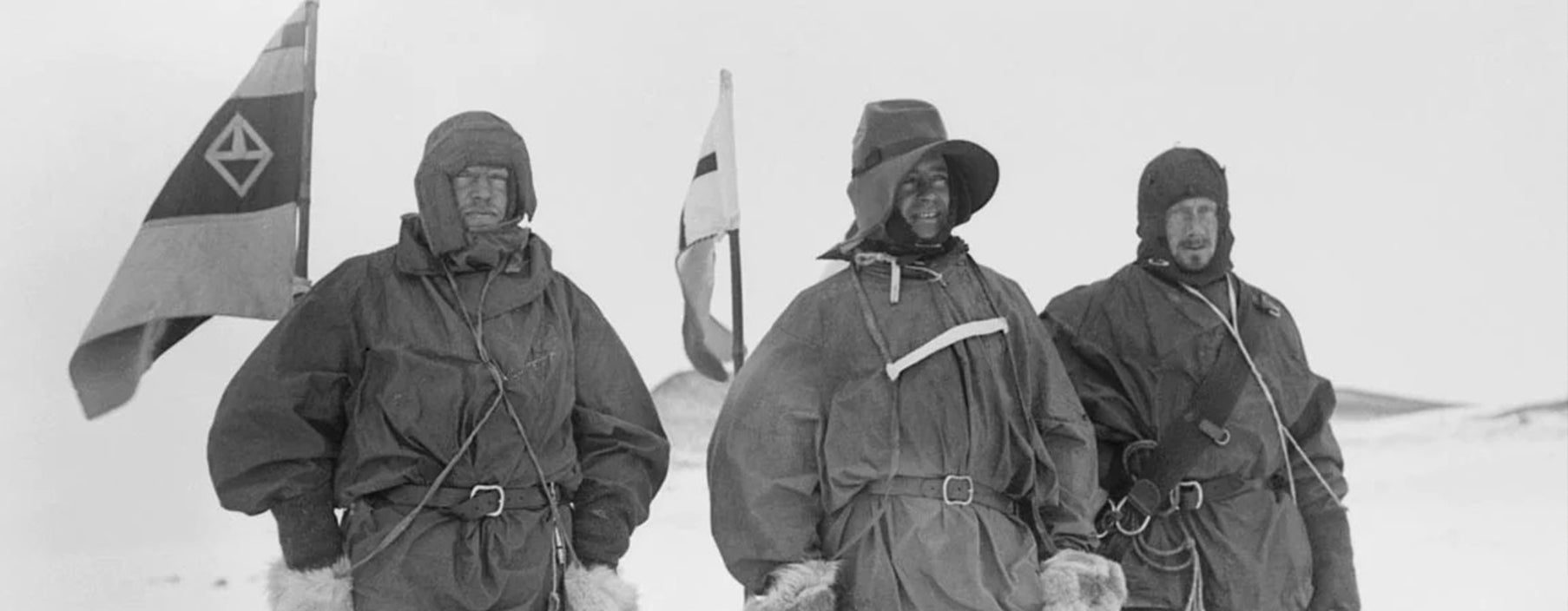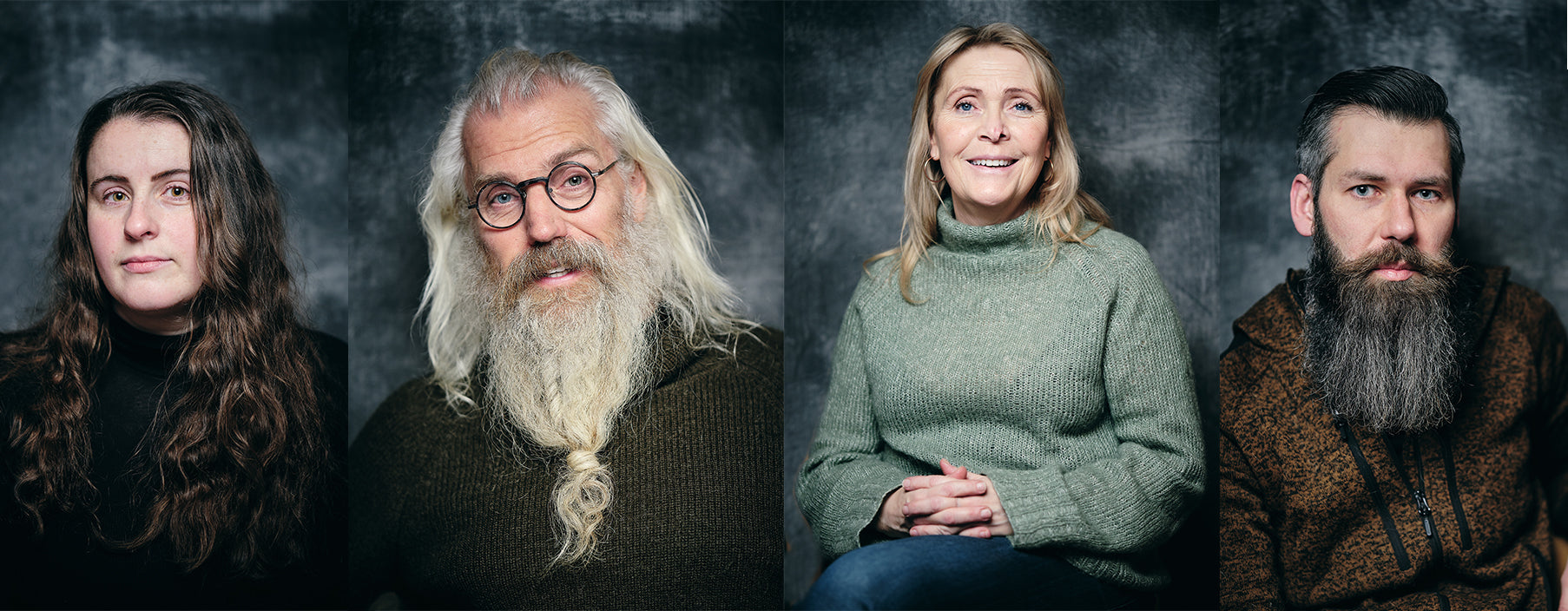
NOTES FROM ROTHERA // HOW SEALS INDICATE THE IMPACTS OF CLIMATE CHANGE IN ANTARCTICA
Dr Connor Bamford is a marine ecologist based in the UK with a passion for furthering marine conservation in the polar regions. He and a multinational team of scientists have embarked on the first of two challenging Antarctic field seasons aimed at investigating how climate change is impacting crabeater seals along the Western Antarctic Peninsula.

Figure 1 - Aerial view of Ryder Bay on the final approach to Rothera from the Dash 7, looking over Anchorage and Lagoon Islands towards the peak of Léonie Island.
The final Dash 7 cargo plane was the most relaxing of the four flights I’d taken from the UK. I had passed through São Paulo, Santiago and was finally leaving Punta Arenas enroute to Antarctica. I had room to stretch my legs out, resting against the boxes of fresh vegetables that would feed Rothera’s 120 or so population for the next few weeks. Stepping off the plane at Rothera, I was greeted by the sight of Ryder Bay, and the harsh bite of the Antarctic wind. The sub-zero temperatures tore straight through the flimsy joggers that had kept me comfortable on that four-day trip south.

Figure 2 – CB photographed ‘around the point’ at Rothera, equipped in the Rothera Down Jacket.
Despite my rookie choice in attire, this wasn’t my first trip south. In 2018, I travelled to South Georgia to assess the recovery of humpback whales (Megaptera novaeangliae) since the ban on commercial whaling. My fieldwork is still geared towards marine conservation, but this latest expedition takes to the Antarctic Peninsula to investigate how climate change is impacting crabeater seals (Lobodon carcinophaga). It’s no easy task, studying polar seals during the lowest sea ice year on record, but it’s important work. Crabeater seals feed exclusively on krill (Euphausia superba), making them perfect proxies for monitoring the elusive crustations that underpin Antarctica’s ecosystem. Critical, albeit not the most attractive of species.

Figure 3 – A juvenile crabeater seal with fresh rake marks along its flank, likely caused by an unsuccessful hunt by a leopard seal (Hydrurga leptonyx).
My research team and I spent our first week in gruelling safety training sessions to get us up to speed on basic alpine techniques. One training session was particularly memorable. Having worked on boats for many years, where getting tangled in rope is something to avoid, taking coils of rope on my shoulders felt unnatural to me. Nonetheless, everything was going swimmingly – until our field guide made us unceremoniously jump off a cliff. This exercise simulated what it would be like to fall into a crevasse and gave our partners practice with anchors and pulley systems. This skill is vital for everyone’s safety, but acquiring it sure gets the heart pumping!

Figure 4 – A photo of my partner trying not to be pulled backwards as I hang off the cliff, taken during crevasse rescue training. Photo credit: Mark Chambers.
As a marine ecologist, I’m very comfortable working around water, but this expedition took away from the water’s edge and up into the mountains. Leaving my comfort zone was necessary to access some of the remoter areas where ice can accumulate, and where our crabeater seals haul out.

Figure 5 - Marine ecology meets mountaineering. Walking along the ridgeline of South Stork, Adelaide Island, Antarctica to scout out possible areas of ice accumulation in the inner reaches of Ryder Bay.
Crabeater seals are the most abundant of all Antarctic seals - the circumpolar population is between 5-10 million. These numbers are not what they once were, but there’s still plenty of them, and they’re a truly fascinating species. Crabeater seals live in the coastal pack ice, a region in constant flux. Winds and currents shift and distort the ice flows, continually manipulating their form and location. Historically these seals have had a two-fold relationship with their environment; they rest on ice flows at the surface during the day, and feed at depth at night. A perfect synergy. However, due to climate change, these once overlapping habitats are separating. Suitable ice is now further away from food, meaning that seals must travel further to feed – an energy cost that they can’t afford.
Sadly, the conditions we faced on this expedition were less than ideal. Ice levels were unprecedently low, and highly dynamic. Ice flows could appear overnight and disappear just as quickly. This volatile habitat is not ideal for crabeater seals. We spotted individuals hauled out onto small bergs rather than more typical ice flows, making the best of a bad situation.

Figure 6 - Aerial imagery of two crabeater seals (top) and a third unidentified seal (bottom) on a medium sized berg.
Arriving on the cusp of the Antarctic winter, calm, workable days were a luxury that had to be taken as and when they arrived. Howling winds regularly built with little warning, turning a mirror-calm day into a furious tempest with stinging wind-blown ice and biting cold.

Figure 7 - CB flying one of the drones on the lookout for seals in North Cove, north of Rothera, equipped in the Rothera Down Jacket.
When wind conditions allowed, we used both traditional quadcopters and more advanced, autonomous fixed-wing drones to collect overhead imagery of seals. These new techniques mean that we can survey tens of square kilometres rapidly and with a much lower economic and environmental cost than previously possible. From the resulting images, we can assess the body condition (length vs width) of individual seals. This data can then be used as an indicator for the state of the environment in the region. Healthy, fat seals indicate that prey is abundant, whereas underweight, thin seals suggest that local prey availability is reduced, and individuals are expending more energy searching than they are consuming. Regrettably, the seals turned out to be few and far between. Perhaps because environmental conditions at Rothera were poorer than they have been in previous years. As the season progressed, the weather worsened, blowing what limited ice there was in Ryder Bay out into open water.

Figure 8 - view to the southeast over a very unfrozen Ryder Bay towards the peaks on Pourquoi Pas Island.
Next season, we hope to conduct regional aerial surveys of Marguerite Bay and Crystal Sound to generate up-to-date regional population estimates for seals in these areas. This data will be combined with automated counts obtained from very-high-resolution satellite imagery. Satellite imagery offers the means of surveying vast swathes almost instantaneously and is a technique that has been successful in surveying other species in other regions of Antarctica. However, being able to compare the accuracy of these new space-borne estimates to counts taken next season will offer much more precise and valuable insights.
Climate change is undoubtedly impacting the Antarctic Peninsula at a far greater rate and intensity than elsewhere on the continent. Comparing population estimates from this and next season to historical data will enable the team to assess the degree of influence climate change has had so far, and predict its impact into the future. We expect that crabeater seals in the north of the Peninsula will already have shifted their behaviour in response to climate change compared to those in the south of the Peninsula, but this remains to be seen.

Figure 9 - Aerial image of a lone Weddell Seal (Leptonychotes weddellii) on a small berg.
Understanding regional population dynamics is a gap in our knowledge that we sorely need to fill. In doing so, ongoing conservation and management measures can be informed, and this highly politicised region of Antarctica can be safeguarded. Our ongoing work aims to aid conservation in this region – a region that holds a special reverence in the hearts of all those fortunate enough to behold it.

Figure 10 - Sunrise over North Cove, Rothera.


